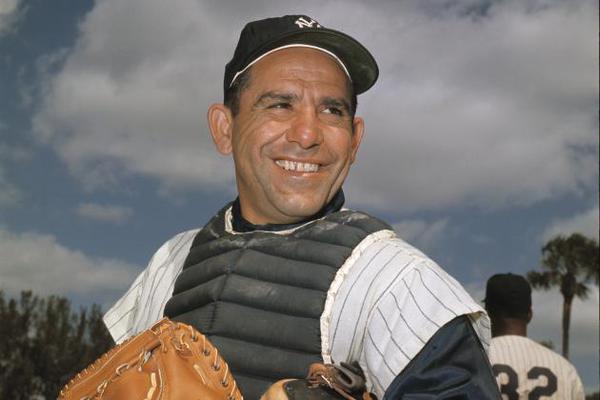How does one fill the void Yogi Berra has left?
It’s simple: one doesn’t.
Because Berra was more than just a longtime baseball player, and later manager. For 19 years, he was a member of the New York Yankees, later served as manager with the New York Mets, before returning to the Yankees. A record 13-time World Series champion, Berra made 21 trips to the Fall Classic.
The three-time MVP and MLB Hall of Famer passed away early Wednesday morning at the age of 90.
Despite his ties to New York on and off the field, it was actually in St. Louis where Berra grew up.
He was born Lawrence Peter Berra in a heavily Italian neighborhood in St. Louis, known as “The Hill” on May 12th, 1925. His parents immigrated there from Italy 16 years earlier. Right down the street from where he lived was a close friend of his and another future Major League Baseball player… Joe Garagiola (who was expected to actually have the better baseball career of the two).
Legendary broadcaster Jack Buck also grew up on the same street, leading the street to be dubbed “Hall of Fame Place”.
In 1942, the St. Louis Cardinals signed Garagiola instead of Berra to a minor-league contract. Branch Rickey had it all planned out for why he was signed. The New York Yankees signed Berra before Rickey could sign him to the Brooklyn Dodgers.
Berra served for America in the U.S Navy during World War II, and was a part of the famous D-Day invasion of France on June 6th, 1944, taking on the role of a gunner’s mate. After his service ended, he returned to minor league baseball. He wasn’t the biggest guy out there, standing at 5’7″ and 185 pounds, but his hard work and dedication to the game shined through it all.
As a player Berra set a record appearing in 14 World Series, winning 10 of them, but in 1956 he became immortalized in baseball history serving as the catcher behind the plate for Don Larson’s perfect game. It remains to this day the only perfect game in World Series history.
It wasn’t just his superb catching behind the plate that made him a legend; it was also his hitting. There were five seasons where he had more home runs than strike outs, including only 12 strikeouts in 597 at-bats during the 1950 season. He hit 358 home runs in his career, had a batting average of .285, and a career total of 1,430 RBI.
He also was a coach with the Mets during the famous “Miracle Mets” 1969 season.
However, in 1985 after managing a year for the Yankees once again, owner George Steinbrenner fired the fan favorite Berra. The firing caused such a rift that Berra did not return to Yankee Stadium or any Yankees’ festivities until 1999, when he was issued a public apology from Steinbrenner.
When he did return it was dubbed “Yogi Berra Day” at Yankee Stadium. It was also host to David Cone throwing a perfect game 43 years after Berra caught Larson’s perfect game.
Perhaps one of his most famous traits was his use of “Yogiisms”. Some examples of these classics include:
- “90 percent of the game is mental, the other 50 percent is physical.”
- “You can observe a lot by watching.”
- “When you come to a fork in the road, take it.”
In 2015, shortly after celebrating his 90th birthday, baseball fans created a petition to attempt to have Berra awarded the Presidential Medal of Freedom. It was similar to the petition that Cardinals fans started to have Stan Musial awarded the same honor.
Unfortunately, unlike Musial, Berra never received the medal.
Yogi Berra wasn’t just a baseball hero… he was an American hero. And he will truly be missed.
I personally would like to send my condolences to the Berra family at this time.



1 comment
That is cool that he grew up not to far from where I have lived most of my life .
Comments are closed.